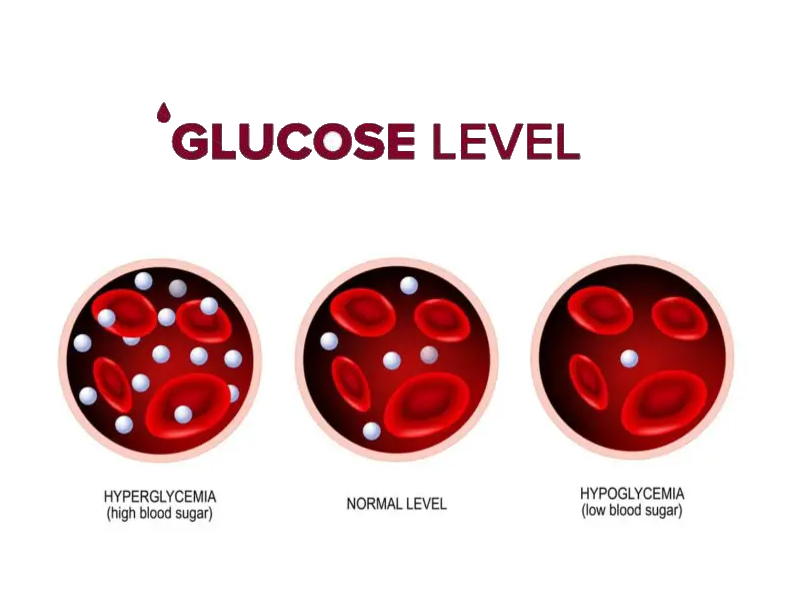Hyperglycaemia is a term used to describe high blood glucose levels. It is a common problem faced by people with diabetes and can lead to serious health complications if left untreated. In this article, we will discuss the causes, symptoms, and treatment of hyperglycaemia in detail.
Hyperglycaemia occurs when there is an excessive amount of glucose in the bloodstream. Glucose is a type of sugar that provides energy to the body. In order to use glucose, the body needs insulin, a hormone produced by the pancreas. However, people with diabetes either do not produce enough insulin or cannot use it effectively, which results in high blood glucose levels.
There are two main types of diabetes: type 1 and type 2. In type 1 diabetes, the body does not produce any insulin, while in type 2 diabetes, the body is unable to use insulin effectively. Both types of diabetes can lead to hyperglycaemia.
Hyperglycaemia can be caused by several factors including:
- Eating too much: Eating a large amount of food, especially high-carb foods, can result in elevated blood glucose levels.
- Skipping or delaying insulin doses: People with type 1 diabetes who take insulin must take it as prescribed to regulate their blood glucose levels. Skipping doses or delaying them can result in hyperglycaemia.
- Physical inactivity: Physical inactivity can also lead to elevated blood glucose levels as the body is not using glucose as a source of energy.
- Stress: Stress can also lead to hyperglycaemia as it triggers the release of hormones that increase glucose production in the body.
- Illness: Certain illnesses such as infections, stress, and surgery can result in elevated blood glucose levels.
Symptoms of hyperglycaemia include:
- Increased thirst: People with hyperglycaemia may experience excessive thirst as the body tries to flush out excess glucose through increased urination.
- Increased urination: People with hyperglycaemia may need to urinate more frequently, especially at night.
- Fatigue: High blood glucose levels can make people feel tired and weak.
- Blurred vision: Hyperglycaemia can also cause blurred vision as the lens of the eye swells due to increased glucose levels.
- Slow-healing wounds: High blood glucose levels can also slow down the healing process of wounds.
Hyperglycaemia can lead to several serious health complications if left untreated. These include:
- Diabetic ketoacidosis (DKA): This is a life-threatening condition that occurs when the body cannot use glucose as a source of energy due to lack of insulin. In response, the body starts to break down fats to use for energy, which results in the production of waste products called ketones. If left untreated, high levels of ketones in the bloodstream can lead to DKA.
- Neuropathy: This is a condition where high blood glucose levels damage the nerves, leading to numbness, tingling, and pain in the hands and feet.
- Nephropathy: This is a condition where high blood glucose levels damage the kidneys, leading to kidney failure.
- Retinopathy: This is a condition where high blood glucose levels damage the blood vessels in the eyes, leading to vision loss or blindness.
Treatment for hyperglycaemia involves lowering blood glucose levels back to a normal range. The following methods can be used to treat hyperglycaemia:
- Diet: Eating a healthy, balanced diet that is low in carbohydrates can help regulate blood glucose levels.
- Medications: Antidiabetic medications, such as insulin or oral hypoglycemic drugs, can be prescribed to lower blood glucose levels. The type and dose of medication will depend on the individual’s specific condition and health history.
- Physical activity: Engaging in physical activity, such as walking, running, or cycling, can help lower blood glucose levels. It’s important to consult with a healthcare provider before starting a new exercise program to ensure it is safe and effective.
- Blood glucose monitoring: Regular monitoring of blood glucose levels using a glucose meter can help individuals with diabetes detect and manage hyperglycaemia. Blood glucose levels should be checked before and after meals and at bedtime.
- Adjusting insulin doses: Individuals who use insulin to manage their diabetes may need to adjust their insulin doses based on their blood glucose levels, food intake, and physical activity. A diabetes care team can help determine the best insulin dosing schedule for each individual.
- Reducing stress: Stress can cause an increase in blood glucose levels, so it is important to find healthy ways to manage stress, such as through exercise, meditation, or therapy.
- Regular medical check-ups: Regular medical check-ups with a healthcare provider can help detect and prevent hyperglycaemia and its potential complications.
In severe cases of hyperglycaemia, such as diabetic ketoacidosis (DKA), hospitalization may be necessary to bring blood glucose levels under control and treat any complications.
In conclusion, hyperglycaemia is a common and serious complication of diabetes that can lead to serious health problems if left untreated. To prevent and manage hyperglycaemia, it’s important to eat a healthy diet, take medications as prescribed, engage in physical activity, monitor blood glucose levels regularly, reduce stress, and attend regular medical check-ups. With proper management and care, individuals with diabetes can lead healthy and active lives.
